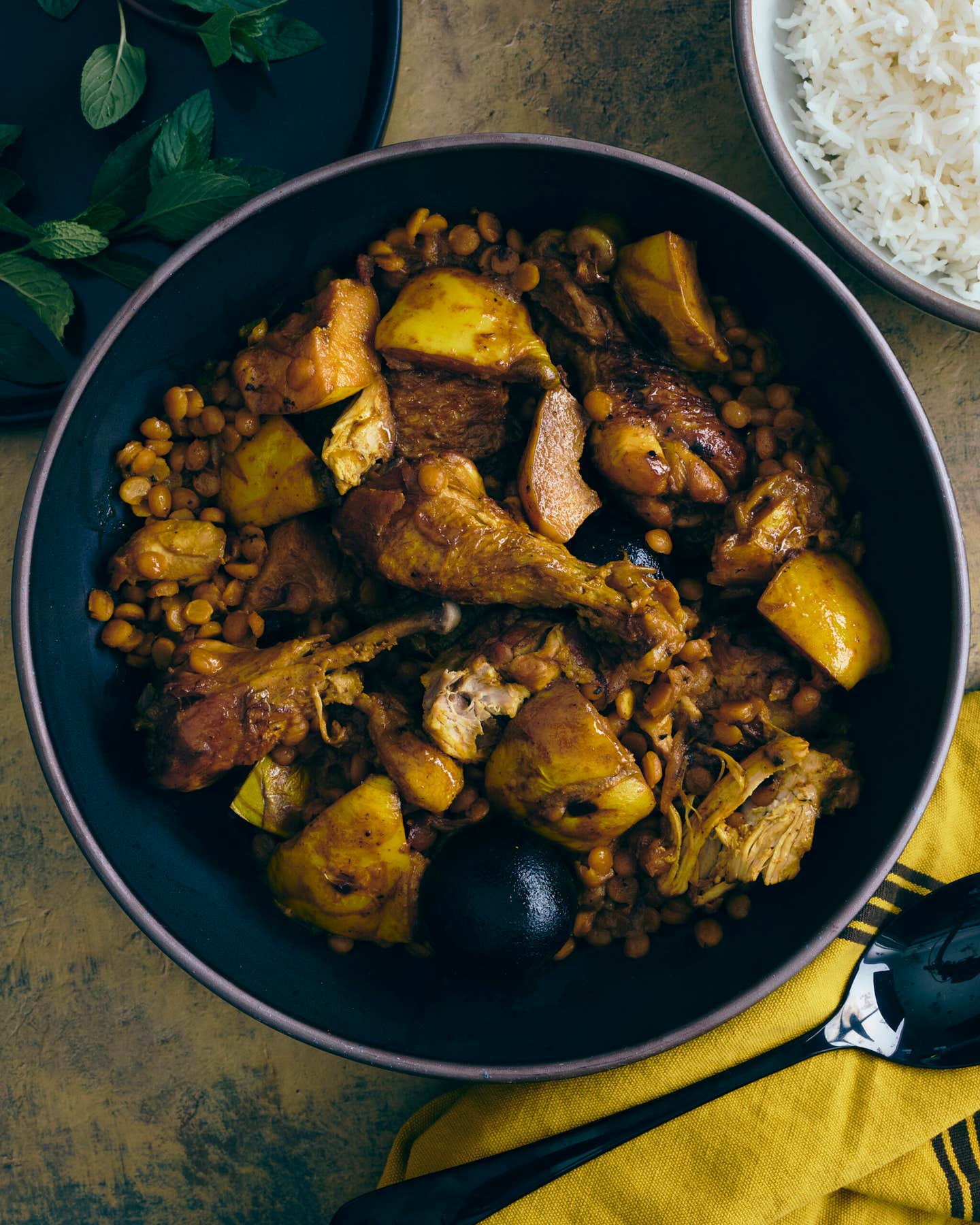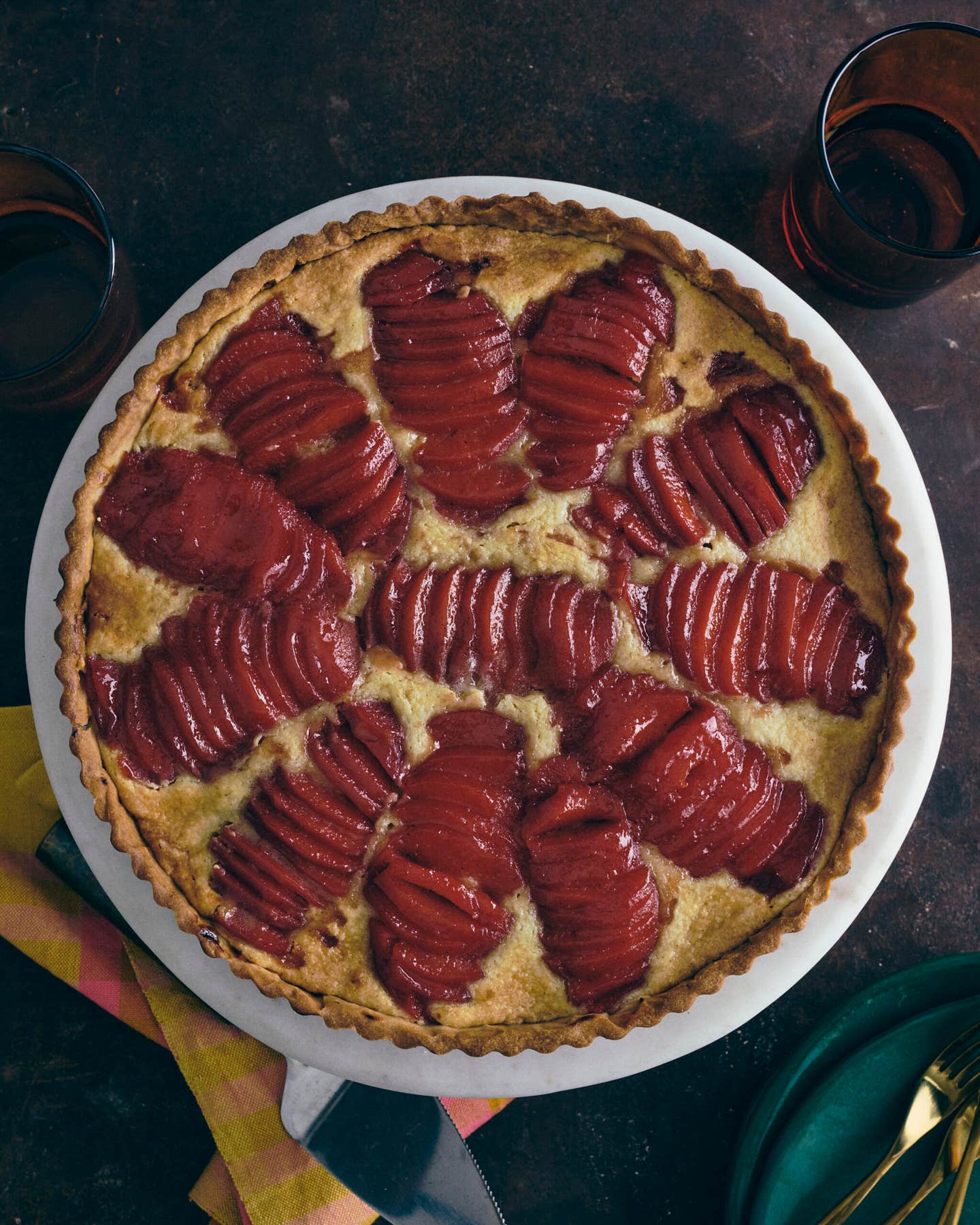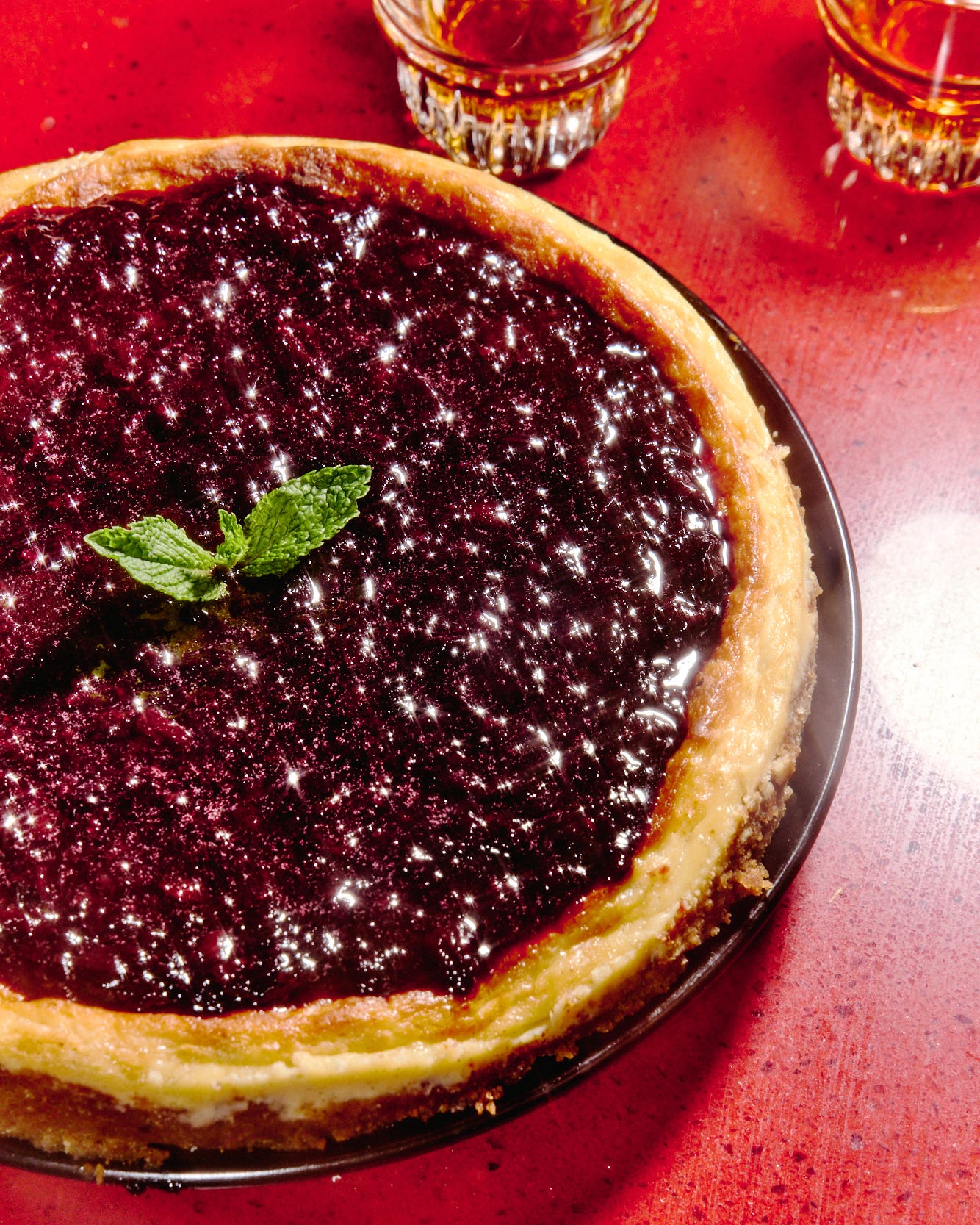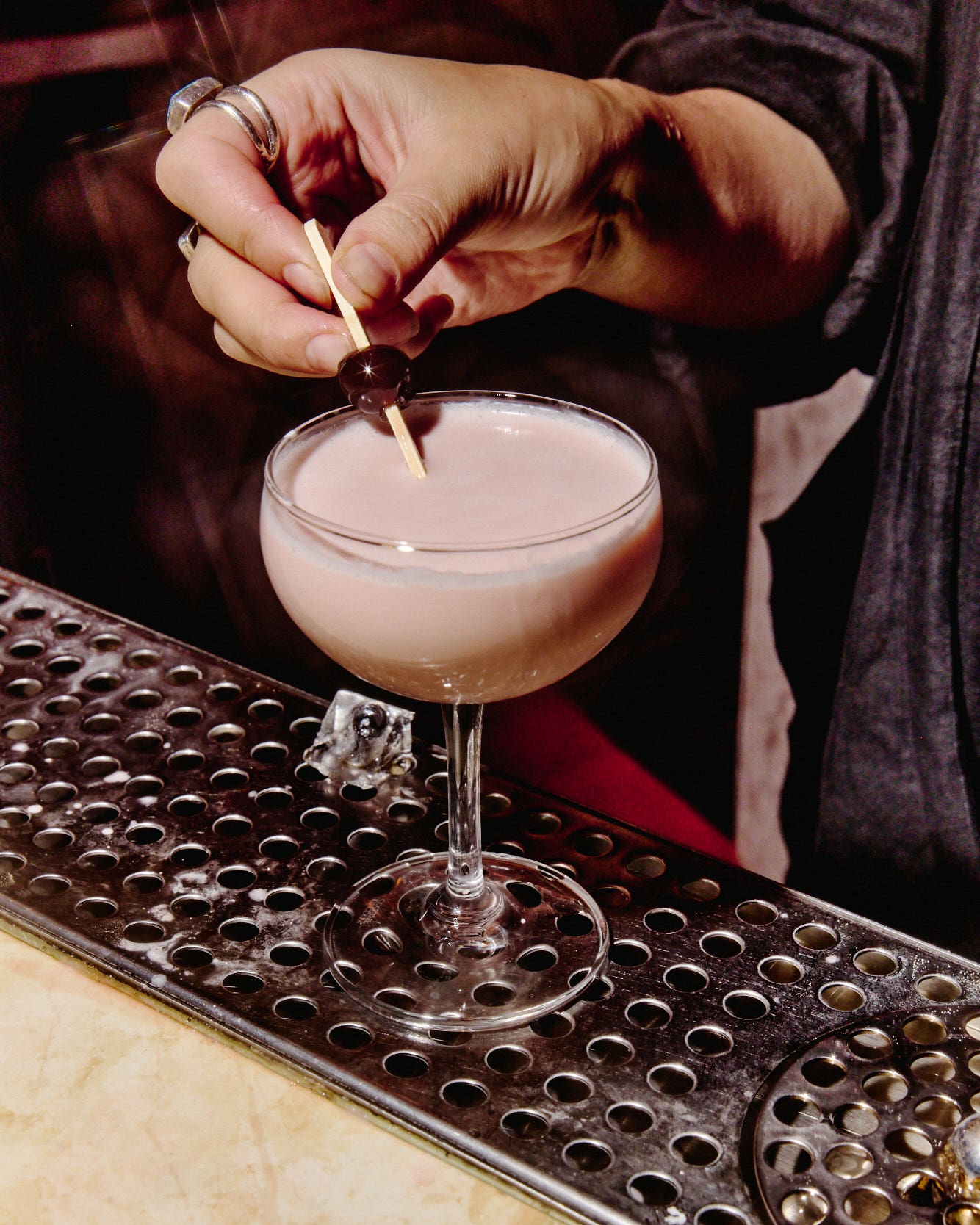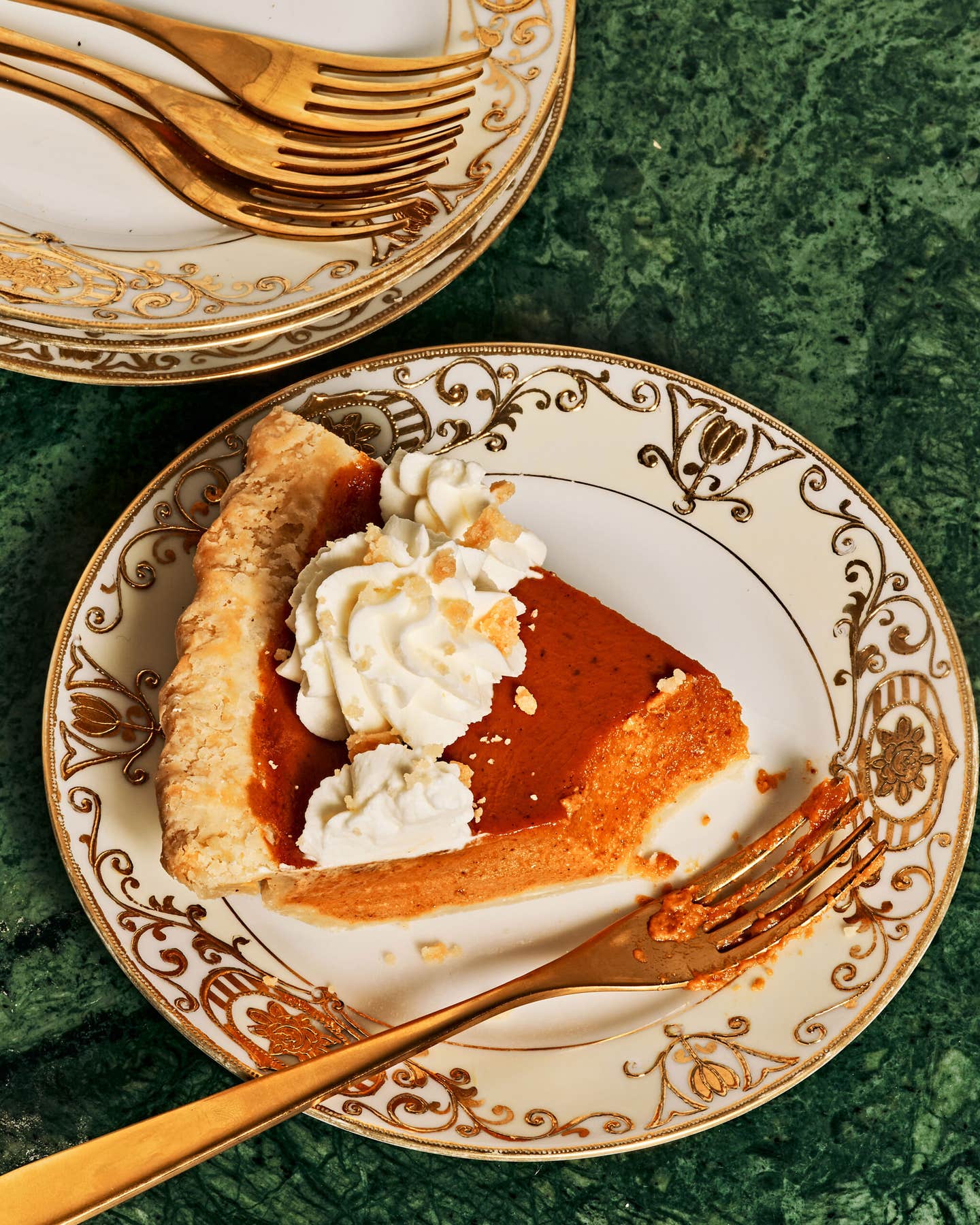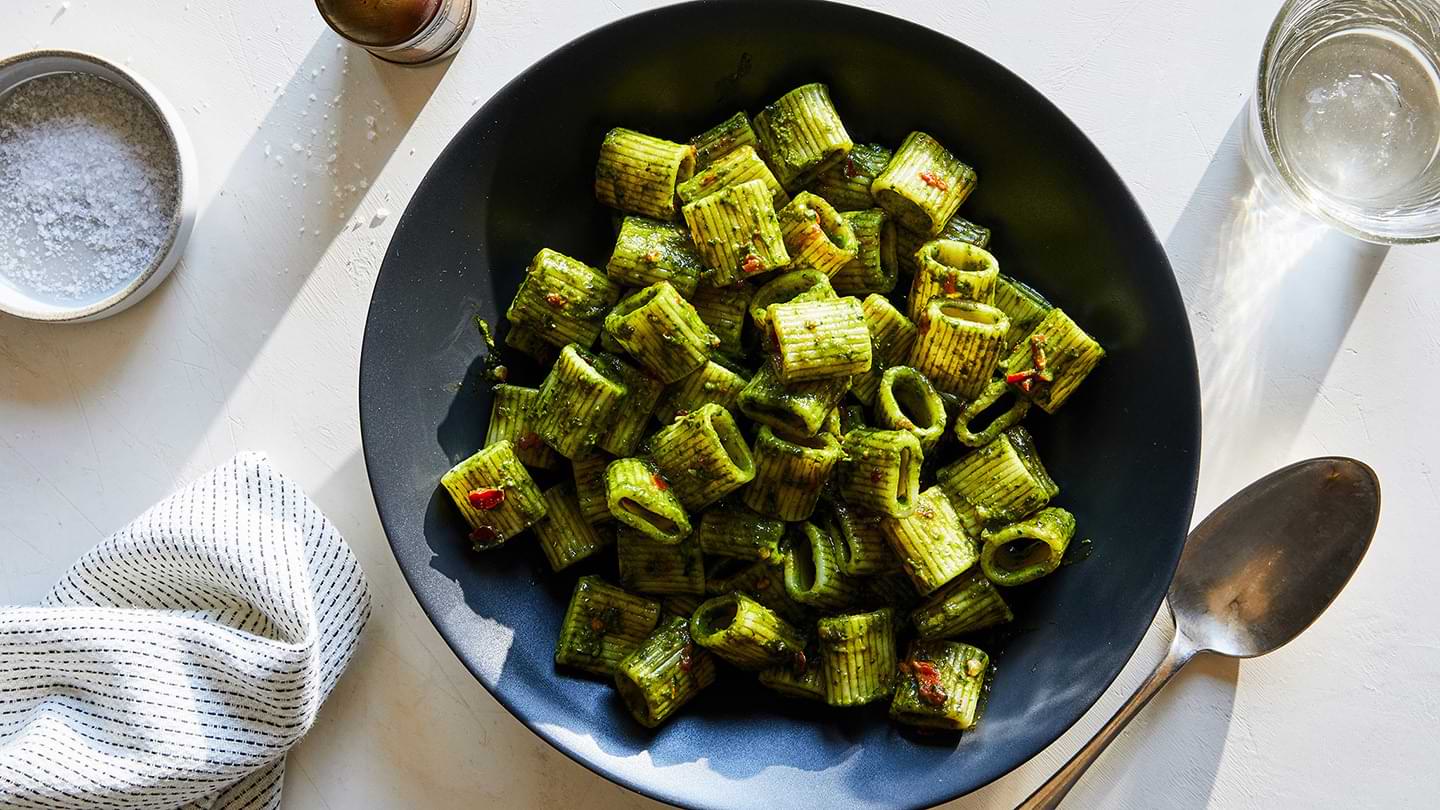Membrillo
Making thick, Spanish-style quince paste at home requires just three ingredients and time.
- Makes
2 cups
- Time
2 hours 15 minutes, plus chilling
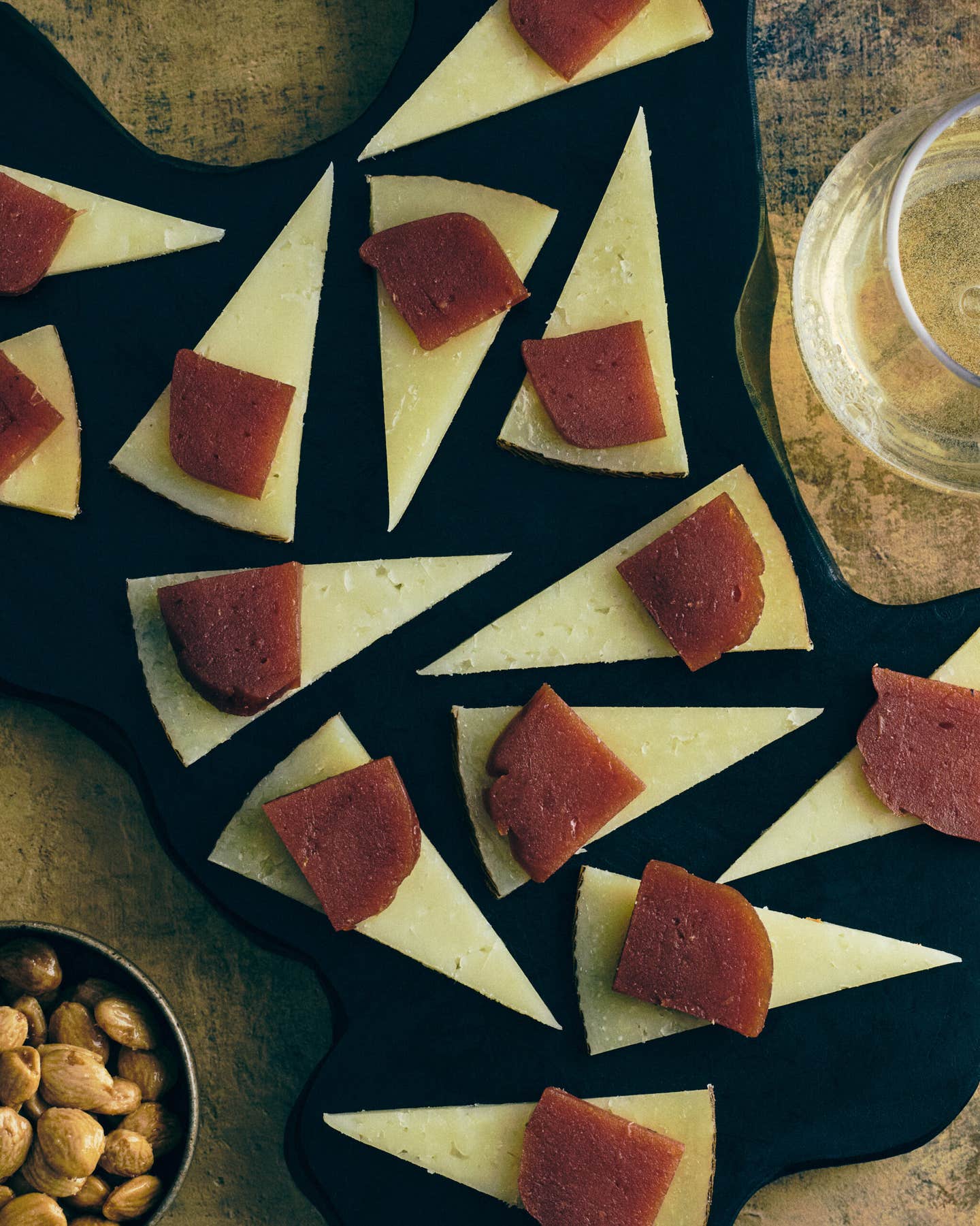
Chances are, you first encountered quince as dulce de membrillo, the Spanish paste often served with Manchego. Nan Stefanik, owner of Vermont Quince Co., has churned out tons of the preserve—and honed her recipe with every batch. Use it in grilled cheeses, thinned with vinegar as a glaze for roasts, or cubed in muffins or holiday cookies. If you like, before molding, stir in a teaspoon of smoked paprika, a handful of walnuts or marcona almonds, a few drops of rose water, or chopped candied ginger.
Featured in “Why Quince, the World’s Most Stubborn Fruit, Deserves a Spot on Your Table” by Benjamin Kemper in the Fall/Winter 2025 issue. See more recipes and stories from Issue 205.
Ingredients
- 2 lb. quinces (3–4 medium), quartered, cores intact
- 1 cup sugar
- ¼ cup fresh lemon juice
- Vegetable or olive oil, for greasing
Instructions
Step 1
Step 2
Step 3
Step 4
Step 5
- Bring a large pot of water to a boil. Turn the heat to medium-low, add the quinces, and simmer until nearly mushy when pierced with a knife, about 30 minutes. Using a slotted spoon, transfer the fruit to a cutting board and set aside to cool. Transfer the cooking liquid to a bowl and reserve. Rinse out the pot and reserve.
- When the fruit is cool enough to handle, cut out and discard the cores and any gritty bits, then use a food mill to purée the flesh into a medium bowl. Stir in the sugar and lemon juice. (Or, after coring, purée in a food processor or blender—skins and all—with the sugar and lemon juice, adding the reserved cooking liquid as needed to keep things moving.)
- Return the purée to the pot and bring to a boil. Turn the heat to medium-low and simmer, stirring frequently with a silicone spatula, until the paste turns a deep salmon color, becomes hard to stir, and holds its shape, 1–1½ hours. (If the paste becomes too stiff, loosen with some of the reserved cooking liquid.)
- Spread the hot paste into a greased and parchment-lined 8- by 8-inch square pan and set aside to cool completely. Cover with plastic wrap and refrigerate for at least 12 hours.
- Using a wet knife or cookie cutter, cut the paste to your liking and wrap each piece in plastic wrap. The paste will keep for up to 5 months in the fridge or 1 year in the freezer.
Keep Reading
Continue to Next Story

